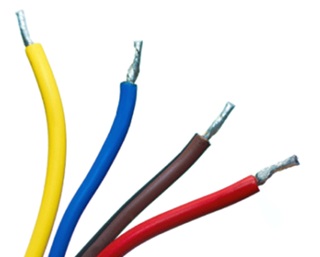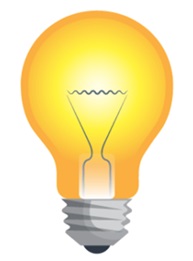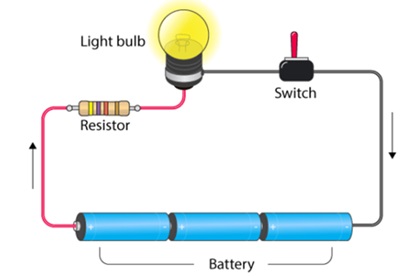CBSE Class 6 Science Notes Chapter 12 Electricity and Circuits
CBSE Class 6 Science Notes Chapter 12 Electricity and Circuits are given below. Our notes are designed by the subject experts and are as per the NCERT guidelines. These notes include all the important points of the chapter in detailed way, so you can refer to this whenever required. Study Path provides CBSE Class 6 Science Notes Chapter 12 that are easy to understand and also free downloadable PDF format, so students can practice it for their studies and get good marks in their examinations.
Electricity and Circuits Class 6 Notes Science Chapter 12
Introduction to Electricity and Circuits
Electricity has become so common that sometimes we forget its immense applications.
Advantages of Electricity:
- Light in our houses, offices, roads etc. even past sunset
- To operate pumps which in turn have a lot of applications
- Electrical appliances like refrigerator, fans etc.
- Building houses, installing equipment etc.
Current
- Current is the flow of particles in a particular direction. E.g air currents that cause winds or water currents.
- When particles flow in an electric circuit to produce electricity, it is called an electric current.
Electric current
The flow of electric charges in a circuit is called an electric current. The direction is taken from the positive terminal to the negative terminal of the battery in an external circuit.
Electric Cell
- It is a small cylindrical structure which helps in operating the devices.
- A small metal cap is placed on one side and a metal disc is present on the other side.
- All cells have two terminals: Positive and Negative.
- The metal cap and metal disc are positive (+) and negative (-) terminals of the electric cell respectively.
- Chemical energy is converted into electrical energy inside a cell. When the chemicals are exhausted, the cell stops working.

Wire
- An electric wire is a conducting path in an electric circuit, through which current flows.
- It is usually made out of a metal that is a good conductor of electricity.

Electric Bulb and its working
- The outer covering is glass and the base is metallic.
- The part of the bulb which glows is called Filament and is made up of tungsten.
- The filament is attached to two wires. One of the wires is connected to the metal case at the base and the other wire is connected to the metal wire at the centre of the base.
- Base of the bulb and metal tip are the terminals of the bulb and they do not touch each other.

Electric circuit
- A closed-loop path, which the current takes is known as an electric circuit.
- When the path of the circuit is closed, current flows through it.
- When there is a break in the path (switch is open) then, the circuit is open and not conducting so the current does not flow.
Consider an electric cell and a bulb. The terminals of the cell are connected to the terminals of the bulb by the means of electric wires. Such an arrangement of cell and bulb is called an Electric Circuit. The circuit is said to be complete in this case because of which electricity will flow and the bulb will glow.

Electric switches
Switch is an integral part of an electric circuit. It is a simple device which breaks or completes a circuit. When the switch is ‘on’, the circuit is complete. When the switch is ‘off’, current does not flow in the circuit. So an electric appliance will only work if the switch is ‘on’.

Conductors and insulators
- Any material that allows the electric current to pass through it is called as the conductor. Eg: metals like copper
- Materials that do not allow the free flow of current through it are known as bad conductors or insulators E.g.: Rubber, plastic
Revision Notes for CBSE Class 6 Science Chapter 12 – Free PDF Download
Our Class 6 Revision Notes will provide a quick glimpse of the chapter and improve the learning experience. We have made these revision notes keeping the convenience of students in mind so that it proves more effective. You can easily read these Class 6 notes just by clicking on the chapter names provided above.